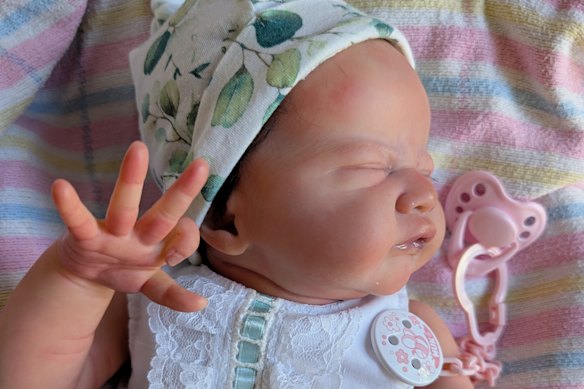
UPDATE: The fascination with hyper-realistic reborn dolls is skyrocketing as people seek comfort and emotional connection without the challenges of parenting. These meticulously crafted dolls are not just toys; they are becoming essential tools for therapy and personal solace, according to experts in the field.
Just announced: The reborn doll market, which originated in the mid-1990s, has seen a resurgence, reflecting a growing demand among various demographics, especially in Australia. Annette Kravchenko, owner of Aussie Reborn Supplies in Queensland, states, “There are many reasons people want a reborn doll,” highlighting that they cater to young children, older women missing motherhood, and individuals unable to have children.
This trend gained significant visibility recently when a TikTok video featuring a woman taking her “newborn baby” to a hospital racked up over 16 million views, igniting debates over the appropriateness of such dolls in public spaces. This has raised concerns about potential proposals to restrict public healthcare access for individuals with reborn dolls.
These lifelike dolls, which can take up to six weeks to create and cost anywhere from $600 to $6,000, are designed to provide emotional support. Kravchenko notes that they are often used in therapy to cope with grief or trauma, with some mothers commissioning dolls based on their deceased children.
Why it matters NOW: The emotional impact of reborn dolls cannot be understated. They serve as comfort objects for people dealing with loss, anxiety, or the inability to nurture a child. Kravchenko mentions that some clients even incorporate the ashes of their late babies into their reborn dolls, using them as a way to maintain a connection.
In addition to traditional dolls, the market has expanded to include creations that reflect various disabilities and conditions, such as conjoined twins, further emphasizing the emotional engagement surrounding these products. Kravchenko highlights the diversity of the clientele, stating, “Some women have nurturing instincts that they can’t otherwise satisfy.”
As the trend continues to grow, expect more discussions and potential regulations surrounding the use of reborn dolls in public spaces. The emotional and psychological implications of these dolls are prompting conversations about their role in society.
What’s next: With the increasing visibility of reborn dolls on social media platforms like TikTok, their popularity is likely to expand even further. Authorities and healthcare providers may need to address the implications of this phenomenon, especially as emotional support tools continue to blur the lines between parenting and companionship.
Stay tuned for more updates on this developing story, as the conversation around reborn dolls evolves and their impact on individuals and communities is further explored.







